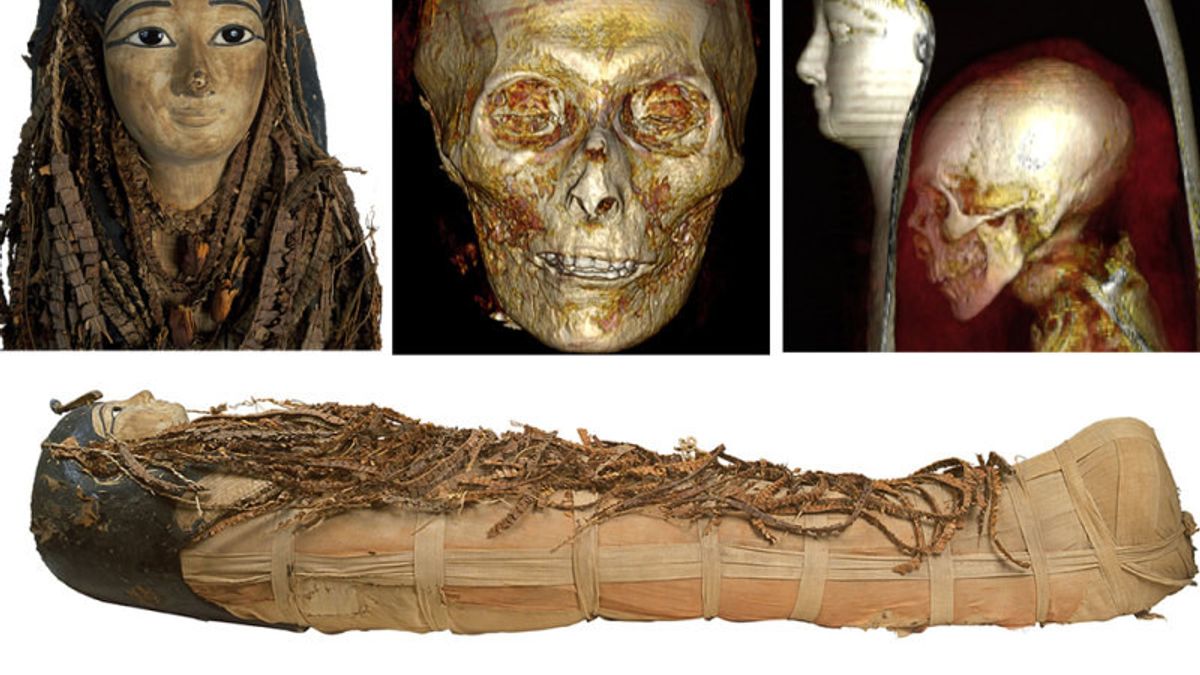JAKARTA - Archaeologists discovered the mummy of Amenhotep I in Deir el-Bahari, a village in Egypt's Valley of the Kings, in 1881. But scientists were unable to open it for 140 years because they were afraid of damaging his ornate face mask and bandages.
In 1902, the mummies of the Egyptian kings were transferred to the Egyptian Museum at Tahrir in Cairo, where they remain today. The mummy of Amenhotep I remains encased even after nearly a century.
Fortunately, thanks to computer tomography (CT) technology, they don't have to open the mummy the traditional way. Researchers at Cairo University recently digitized Amenhotep to reveal more details about his life and dynasty.
The study's lead author, Dr. Sahar Saleem, told PA Media the details they found, said Amenhotep was around 35 years old when he died.
"My Amenhotep seemed to be physically similar to his father: he had a narrow chin, a small nose, curly hair, and slightly protruding upper teeth," says Dr. Saleem, as quoted by Techtimes.
It seemed that he did not suffer any external injuries that led to his death. However, they found that the grave robbers may have caused various post-mortem wounds to the body.
After Amenhotep's death, priests of the 21st dynasty reattached his head and neck using resin-treated linen bands, along with about 30 amulets they found hidden between his bandages.
With a 3D model of the wrapped mummy, each of its parts can be seen: the head mask, the bandages around the mummy, and the mummy itself.
Through digital mummification, layers were removed from the mummy to reveal its exterior and interior, allowing archaeologists and researchers to study it in detail.
The Historical Value of the Mummy of Amenhotep I
By unwrapping this digital envelope, researchers were able to provide insight into one of the most interesting periods in Egyptian history, the New Kingdom period under Amenhotep I, through the help of technology.
He was the first pharaoh of Egypt's 18th dynasty, which would include Akhenaten, the defiant "heretic" pharaoh who introduced his kingdom to a monotheistic religion revolving around the sun.
Amenhotep ruled between 1525 and 1504 BC and was Tutankhamun or the father of King Tut.
In 1977, archaeologists used CT scans to examine mummies for the first time. As technology has evolved and become more accessible, researchers have been able to study mummies in ways they couldn't before.
"We show that CT imaging can be used advantageously in anthropological and archaeological studies on mummies, including those from other civilizations, for example Peru," concludes Saleem.
The mummy and burial interventions of Amenhotep I can be greatly explained through the opening of the digital envelope using a CT scanner, non-invasively revealing the physical attributes of the King, understanding mummification in the early 18th Dynasty, and determining burial procedures for the 21st Dynasty.
The English, Chinese, Japanese, Arabic, and French versions are automatically generated by the AI. So there may still be inaccuracies in translating, please always see Indonesian as our main language. (system supported by DigitalSiber.id)













